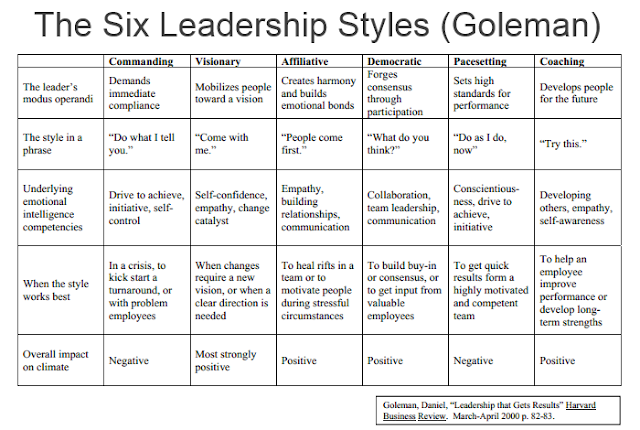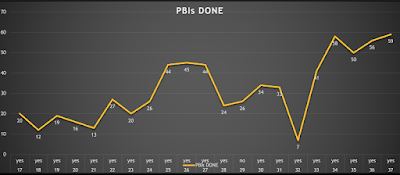In 2006, there was one player dominating the football world… He carried the France national team during the entire World Cup campaign. Being at his best and considered the best player in the world back then... he was Zinedine Zidane… So, for the final game, France met Italy. It started merely with a penalty given for France, and Zizou scored with precision and grace. Italy pushed harder and managed to score for 1:1… Both teams slowed down the pace and played the rest of the official time without more goals. After the first extension, the final was slowly getting to penalties when Zidane and Materazzi (the Italian scorer) exchanged some ‘compliments’… and it led to the most famous headbutt in the football history. A red card ended the carrier of an amazing player… Even worse, Italy managed to secure the victory and the World Cup 2006, later that night.
Zidane’s story is a perfect example of how devastating emotional hijack could be, and how lacking in emotional intelligence (even for a moment) could lead to bitter consequences for you, your team and organization.
---
14 years later, in 2020, Emotional intelligence (EI, EQ) is considered one of the top-most needed skills, along with ‘Complex problem solving’, ‘Critical thinking’, ‘Creativity’, and ‘Negotiation’. In fact, most companies embedded emotionally intelligent behavior in their values like: ‘value people’, ‘master teamwork’, ‘focus on client needs’, etc… And, the following are results of insignificant EI level:
- Poor internal alignment
- Burning unnecessary energy
- Unproductive conflict
- Inefficient leadership
- Low resilience
- Low engagement
If you still have doubts, testing your EI will help you identify the level of your maturity and the areas to improve. You can find a simple and extensive test over the link: How to lead with EI by Annie Mckee
The test covers both 'personal' and 'social' competencies, through the following chapters
- Self-awareness
- Positive outlook
- Self-control
- Adaptability
- Empathy
An emotional hijack happens when the limbic systems take over your body. As a result, you might have any of the following:
When emotionally hijacked you would be in fight or flight mode and in case of non-life-threatening-event the possibility for poor decision and action would be very high. (just like in the story of Zidane).
Practicing an 'Emotional fire drill' could help you manage your triggers. To practice you need to
- Acknowledge how you feel and what triggers it
- Name your emotion
- Find the internal source of the emotion. Could be a belief, value or assumption
- Evaluate what the consequence could be
- Act in a way to avoid the trigger or introduce a change in the internal source
It's highly recommended to look at the different leadership styles. Even better is watching amazing leaders and practitioners in order to improve yourself by 'analyzing' and ‘stealing’ elements of their styles. (many videos and analysis on Youtube)
- Tony Robbins
- Barack Obama
- Jordan Peterson
- Oprah Winfrey
- Joe Rogan
- Donald Trump
- Elon Musk
- Ben Shapiro
--
Imagine the following...
‘You are at the Oskar ceremony. The host says your name to receive an Oskar. You come out on stage, get it, deliver a speech. However, you are interrupted, and the host says there is a mistake: you shouldn’t have received it, another person won.’
Think about how you feel and what do you do?... Then watch Jordan Horowitz classy and impeccable reaction
And here is what happens when you are not so good at hiding your frustration :)))))
---
- From passive to active: “It’s impossible” to “What small steps can I take?”
- From negative to positive: “I don’t want to do it as it makes me sad” to “Which part of it can make me feel happier?”
- From past to future: “I’ve never been good at it” to “If I were good at it, how would I do it?”
- From liability to an asset: “I’m so slow” to ”What benefits does being slow bring here?”
- From victimization to empowerment: “It always happens to me” to “What steps can I take to avoid it in the future?”
---
The three steps of creating outstanding connections with people are
- Attention (interest)
- Attunement, mirroring
- Empathy
The short video provides a good example of Empathy. Although, practicing it might be challenging enough, it could be even more difficult to get rid of the following empathy busters
- Solving the problem ('I’ll fix it', 'I’ll talk to her', 'I will do it')
- Unsolicited advice ('I think you should', 'If I were you', 'Why don’t you just')
- Dismissing feelings ('It’s not that big deal', 'You shouldn’t feel that way', 'Get over it')
- Sarcasm ('That’s such a tragedy', 'It’s just the end of the world', 'Boo, what a shame')
The amazing ability is to lead the others into positive actions, without offering solutions.
--
The workshop is highly rated and the feedback very positive. Some of it below
“I loved everything about the Emotional Intelligence class. Hearing about emotional hijacking, how to be aware of it how to respond and manage it, triggers, and all the other topics gave me a new perspective on it overall. I loved the content and the practice, very easy to follow. The games and discussions we engaged in during class were also enjoyable. Wonderful class.”
“Such training is extremely useful for every Scrum Master. I wish I have attended this training years ago. I would encourage to make such trainings way more visible for everyone who has just picked up such responsibilities.”“Simeon is a great trainer, actively encouraging participation from everyone. He is friendly, humorous and makes the training that much more enjoyable.”
























